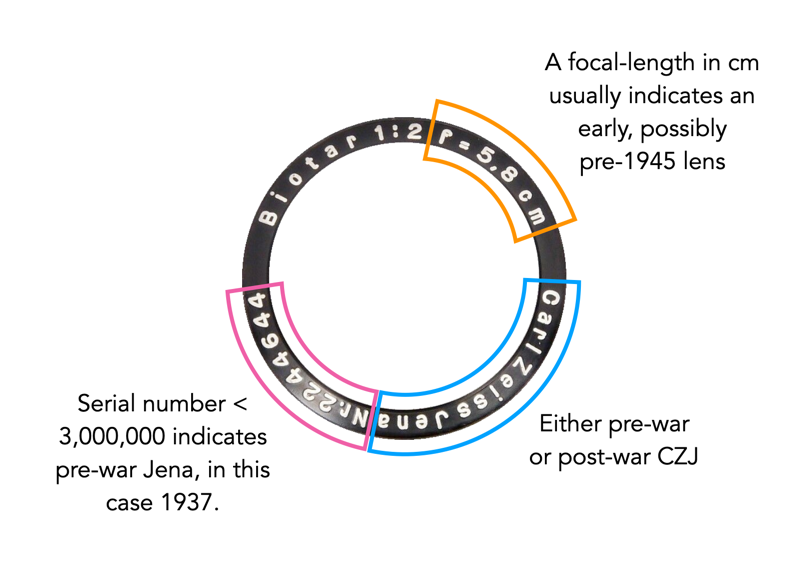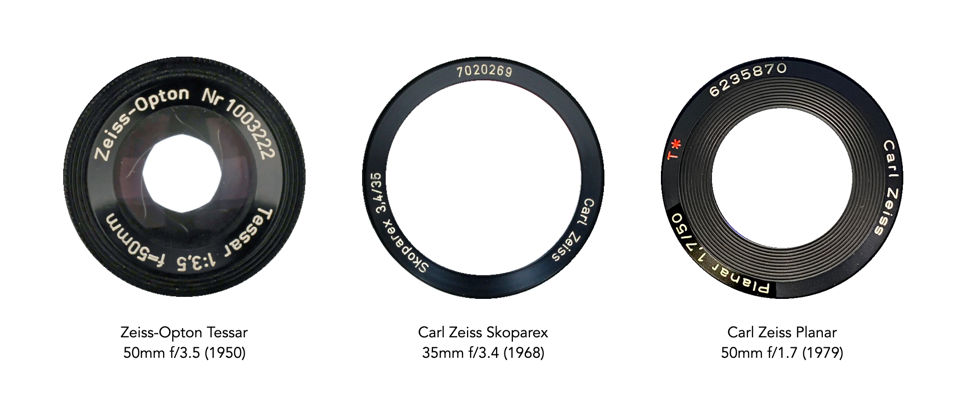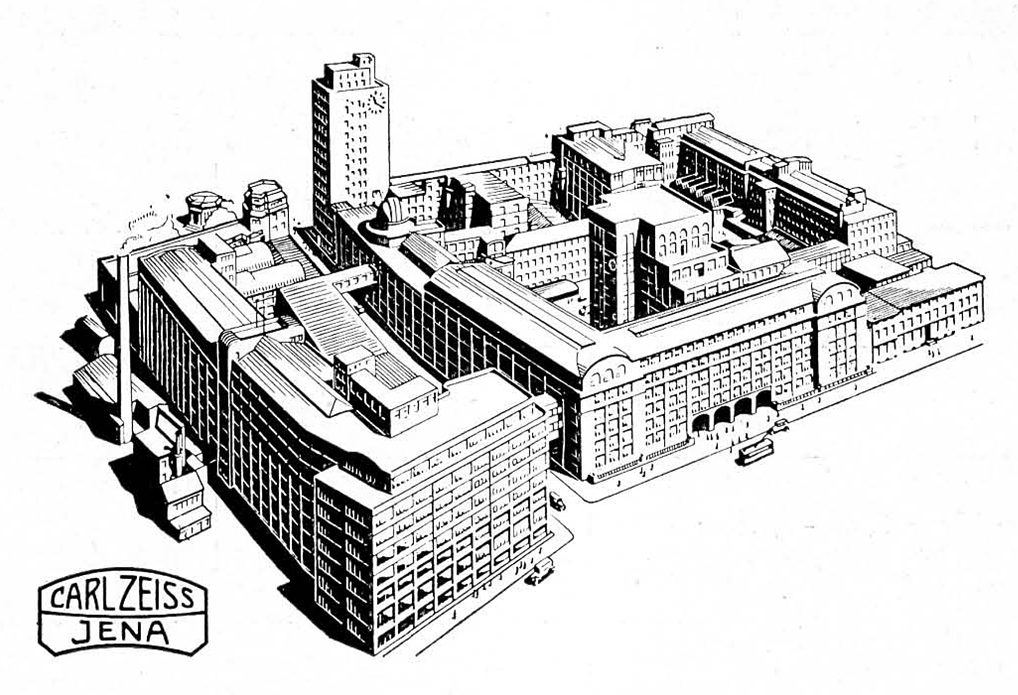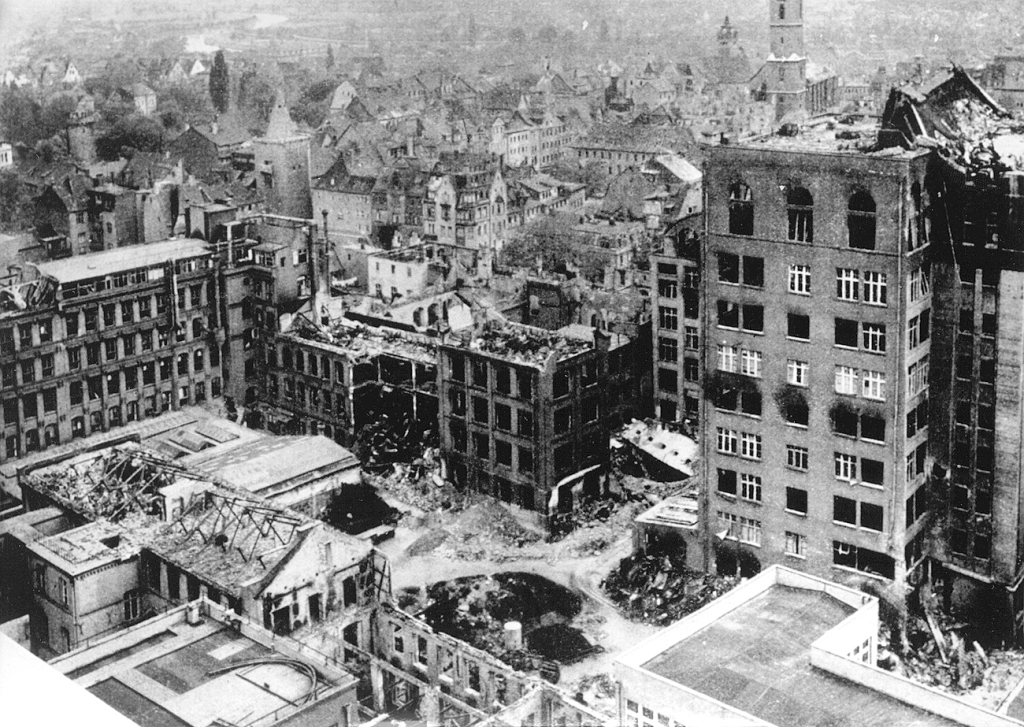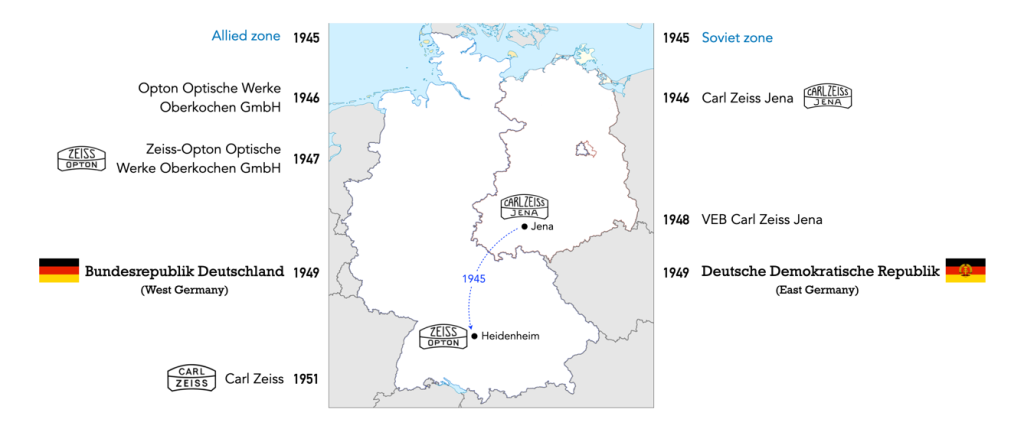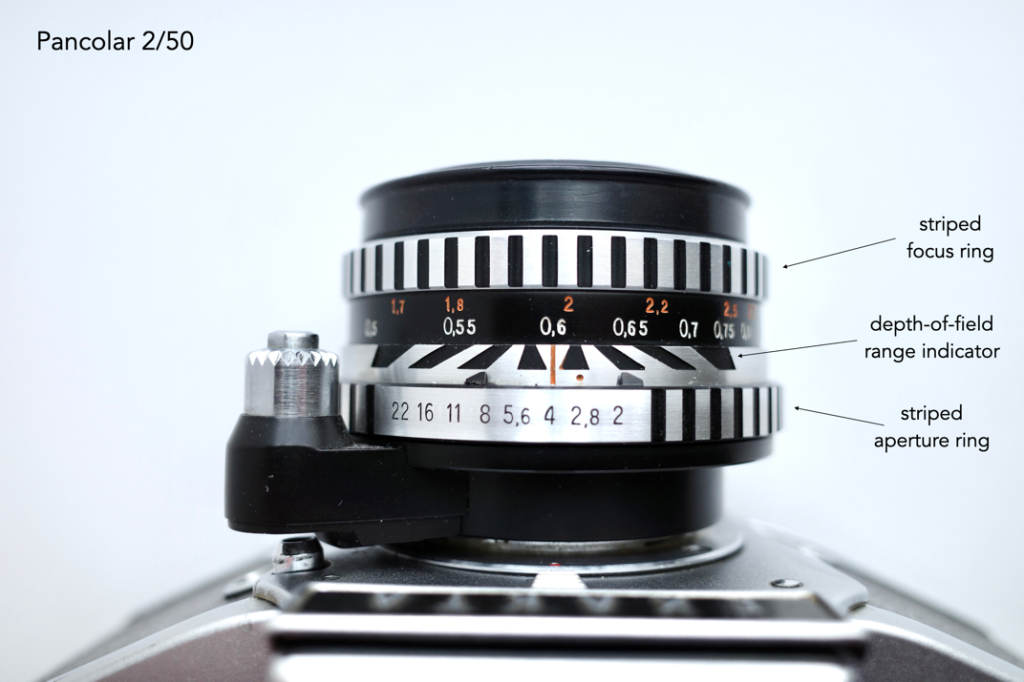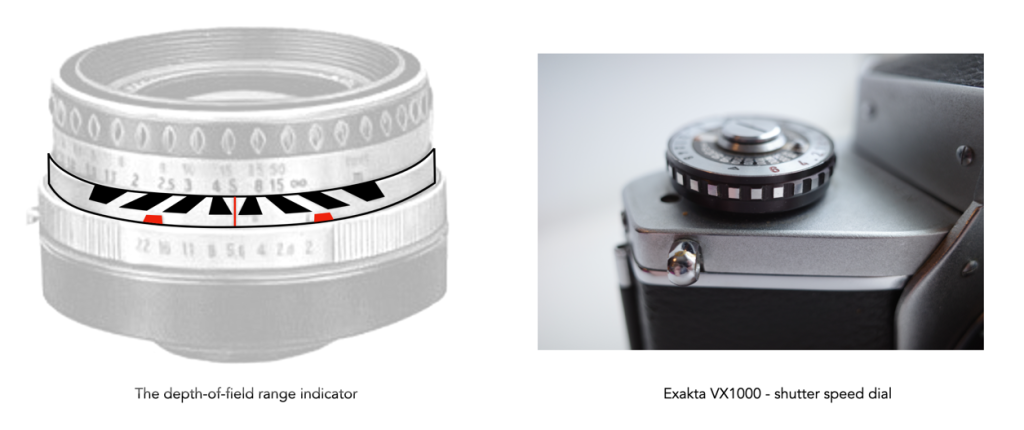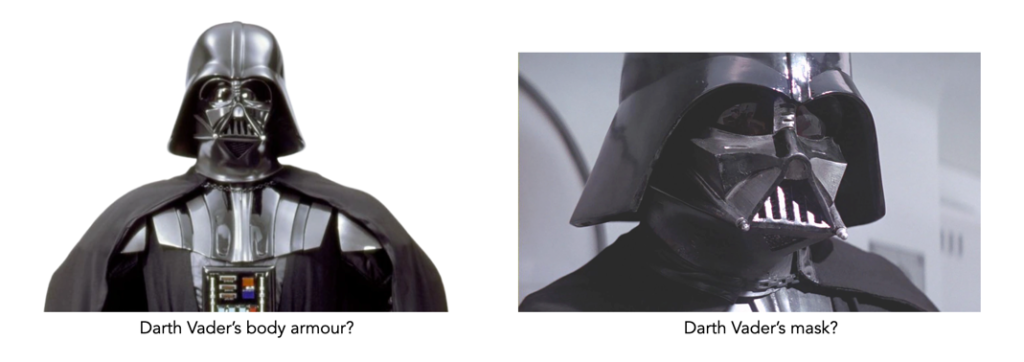The Soviets reportedly stripped Carl Zeiss Jena of 93% of its equipment, most of which was redistributed throughout factories in the USSR. This included 14 of the 16 glass furnaces at Zeiss [4], machines, office supplies and equipment, stocks and raw materials, boilers, elevators, switchboards etc. [5]. So what happened to the equipment taken by the Soviets as war reparations from the Jena plant from October 1946 to April 1947?
The majority of the dismantled equipment was transferred to three cities in the USSR – Moscow, Leningrad, and Kiev [8]. To Moscow went the rangefinder equipment, to Leningrad the equipment for the production of microscopes, micrometers and fine measuring devices, and to Kiev the geodetic equipment and the Contax Camera section [8]. Most of it seems to have been transferred to two factories in Russia: No.349, and No.393.
The Optical-Mechanical Plant No.349 near Leningrad (now St. Petersburg) was founded in 1914 in Petrograd. In 1919 it was nationalized, and in 1921 it was renamed the Factory of State Optics. Further reorganizations resulted in the factory in Leningrad becoming Gosudarstvennyy Opticheskiy Mekhanicheskiy Zavod (GOMZ), or State Optical-Mechanical Factory, in 1932. In 1965 GOMZ changed its name to LOMO (Leningradskoe Optiko Mekhanichesko Obedinenie), or Leningrad Optical-Mechanical Union. They produced optics for the Soviet military and space programs, as well as consumer cameras. Seventy-nine of the Zeiss experts from Jena were assigned to GOMZ, and the existing equipment in various parts of the factory was replaced by equipment dismantled from Jena [2]. By mid-1947 the process was completed, and the Soviet personnel were trained on using the equipment. A CIA report on the facility [2] suggests that much of the dismantled equipment stored in the open, or spoiled by mishandling, and the Soviets gained very little from the seized equipment [2].
Zavod (factory) No.393 is located in the small town of Krasnogorsk, a few kilometers from Moscow. Krasnogorsky Zavod was founded in 1942. During the Soviet era it became known as Krasnogorskiy Mechanicheskiy Zavod (Krasnogorskiy Mechanical Works), or KMZ for short. After 1945 it began producing lenses to Carl Zeiss specifications. The machinery at No.393 seems to be almost entirely made up of machines dismantled from Zeiss, Jena [6]. All the grinding and polishing machines at No.393 were transferred from Jena, amounting to one-third of the entire Zeiss plant as it existed prior to dismantling (100 lens grinding machines, 300 milling machines, and 100 metal grinding machines) [3]. The largest segment of machines was the 400 lathes of various sizes. All optical glass used at No.393 from 1946 to 1952 was from Jena, and of good quality [3].
No.393 produced a lot of optical items, including the Zorky camera, designated “FED”, and associated 5cm lenses. The Zorky was essentially a copy of the Leica IIc manufactured during the period 1940-1944. By 1951, about 400 cameras per month were being produced [6]. By 1947 the plant also made Moscow II 6×9cm camera, aerial cameras, photo-rectifiers, phototheodolites, 16mm motion picture cameras, and a series of military items.
The Contax camera section went to Arsenal No.1 in Kiev, Ukraine [8]. By the later 1940s this plant was making reproductions of the Contax II and Contax III cameras. These would morph into Kiev II and III cameras, eventually modified into the Kiev and 4A and 4AM. Some of the equipment also made it to smaller factories in the USSR. A good example of this is Optical Plant No.230 near the small town of Lytkarino (not far from Moscow). They received 50-60 grinding and polishing machines from Jena [7], although the CIA reports this as “bad and uncared-for equipment”. Some of the equipment was used to outfit a vacant optical plant in Zagorsk. Zeiss specialists installed the machinery, and trained Soviet workers [1].
The dismantling was in many ways not considered to be optimally successful, in all likelihood because insufficient care was taken with the sensitive equipment [4].
✽ Please note that while some people seem to regard the Soviet dismantling of equipment in East Germany to be looting, it was actually part of the reparation payments agreed upon in the Potsdam Agreement.
Further reading:
- “Zeiss Specialists in the USSR”, Central Intelligence Agency, Information Report, 17 December (1952)
- “Optical-Mechanical Factory No.349 GOMZ in Leningrad”, Central Intelligence Agency, Information Report, 23 June (1954)
- “Quantity and Types of Optical Machinery and Equipment at Zavod 393 in Krasnogorsk and at Zeiss in Jena”, Central Intelligence Agency, Information Report, 25 August (1953)
- “Zeiss and Schott and Genossen, Jena”, Central Intelligence Agency, Information Report, 1 April (1947)
- “Organization and Production of the Carl Zeiss Plant at Jena”, Central Intelligence Agency, Information Report, 31 August (1953)
- “Production at Factory 393 at Krasnogorsk”, Central Intelligence Agency, Information Report, 20 August (1953)
- “Optical Plant in Lytkarino”, Central Intelligence Agency, Information Report, 19 January (1950)
- “Activities and Production at Arsenal No.1 Kiev”, Central Intelligence Agency, Information Report, 6 February (1953)

